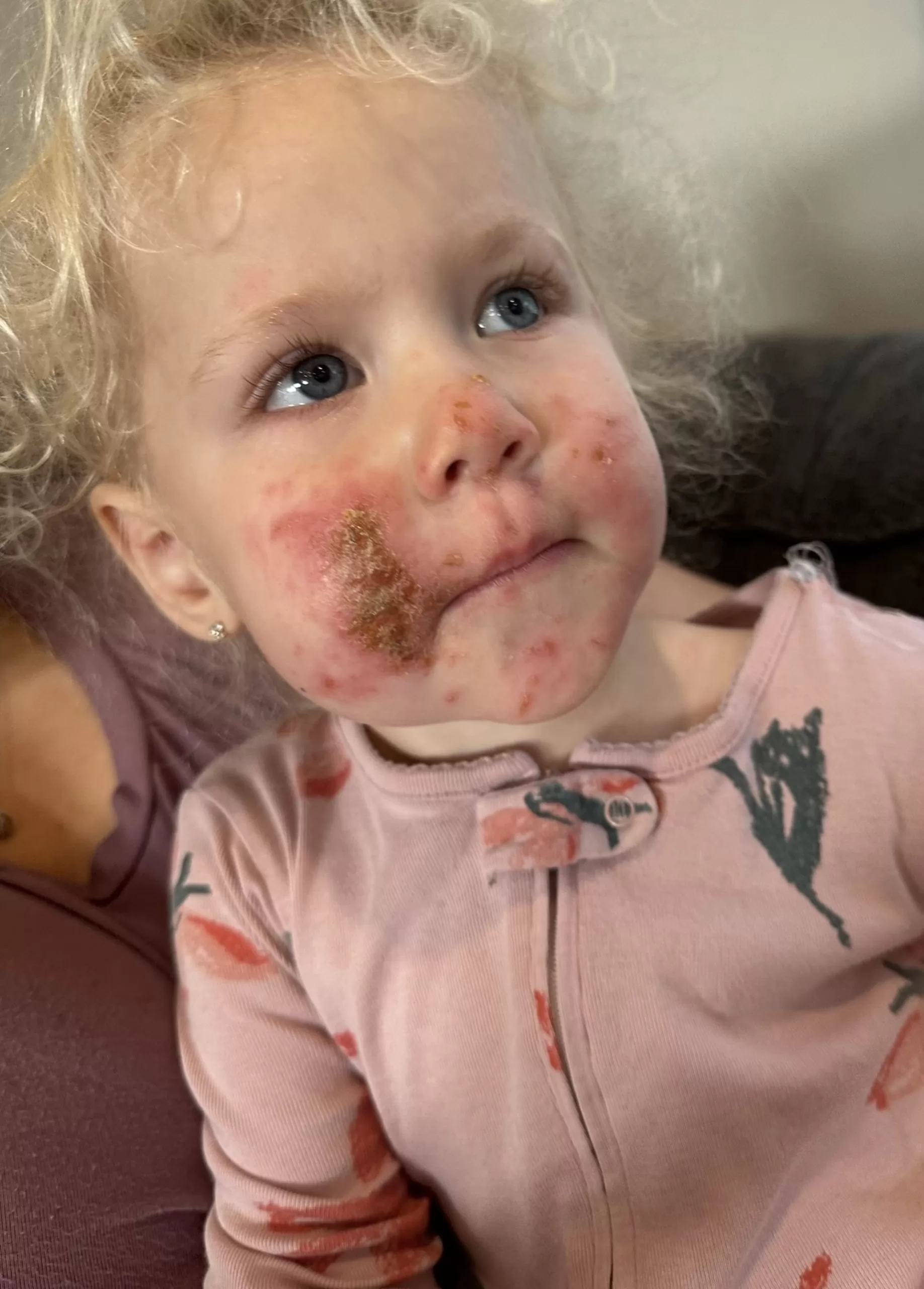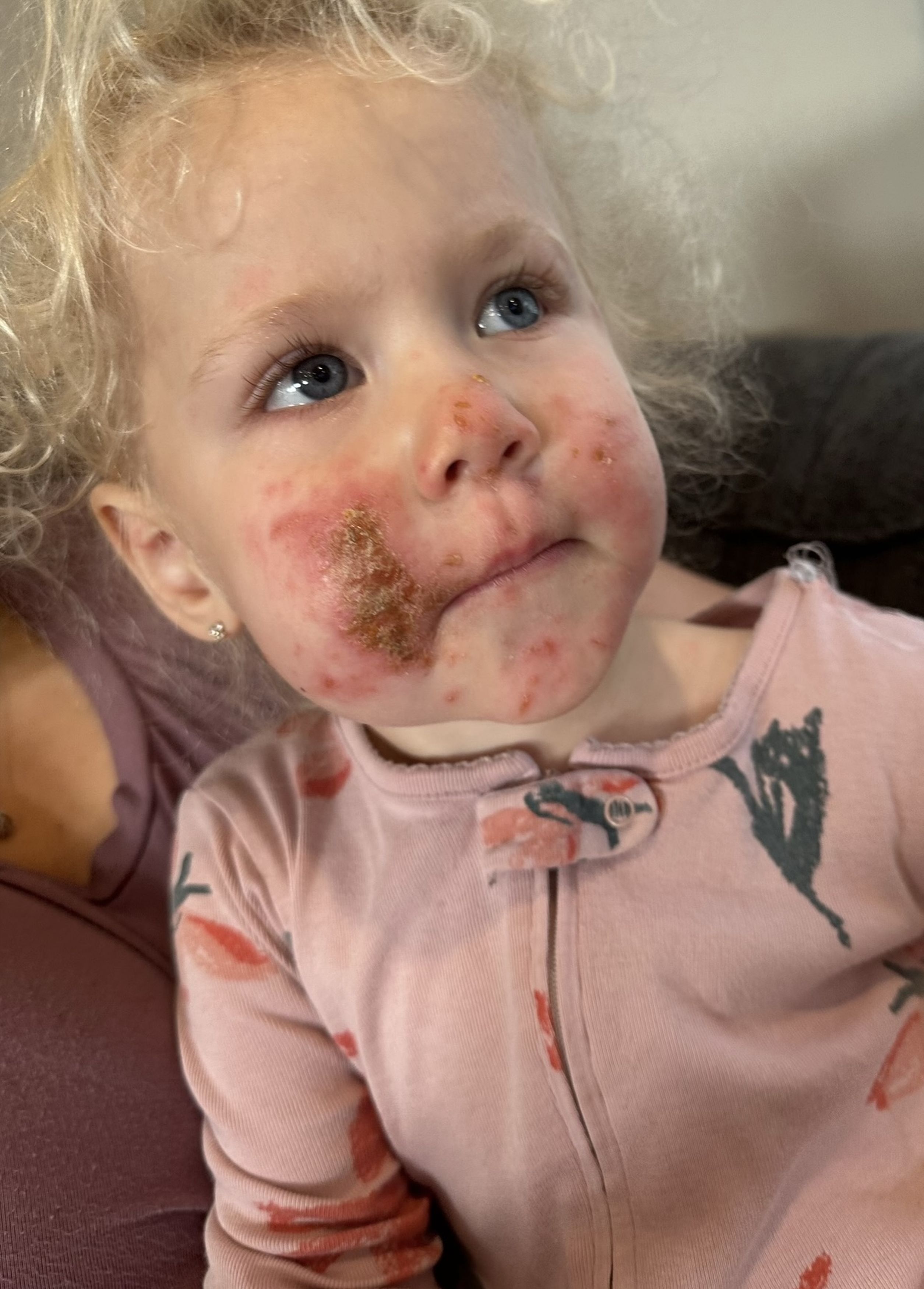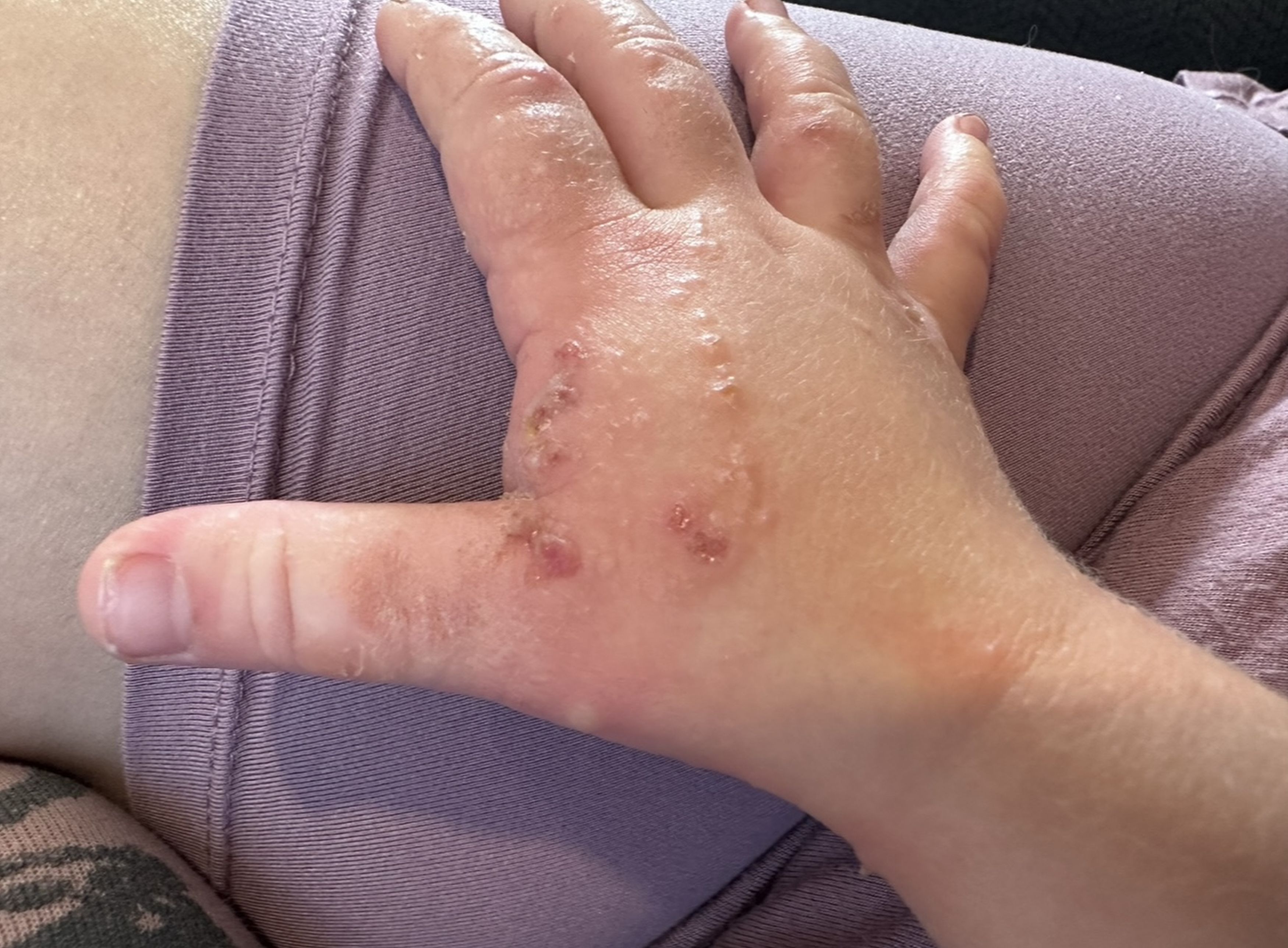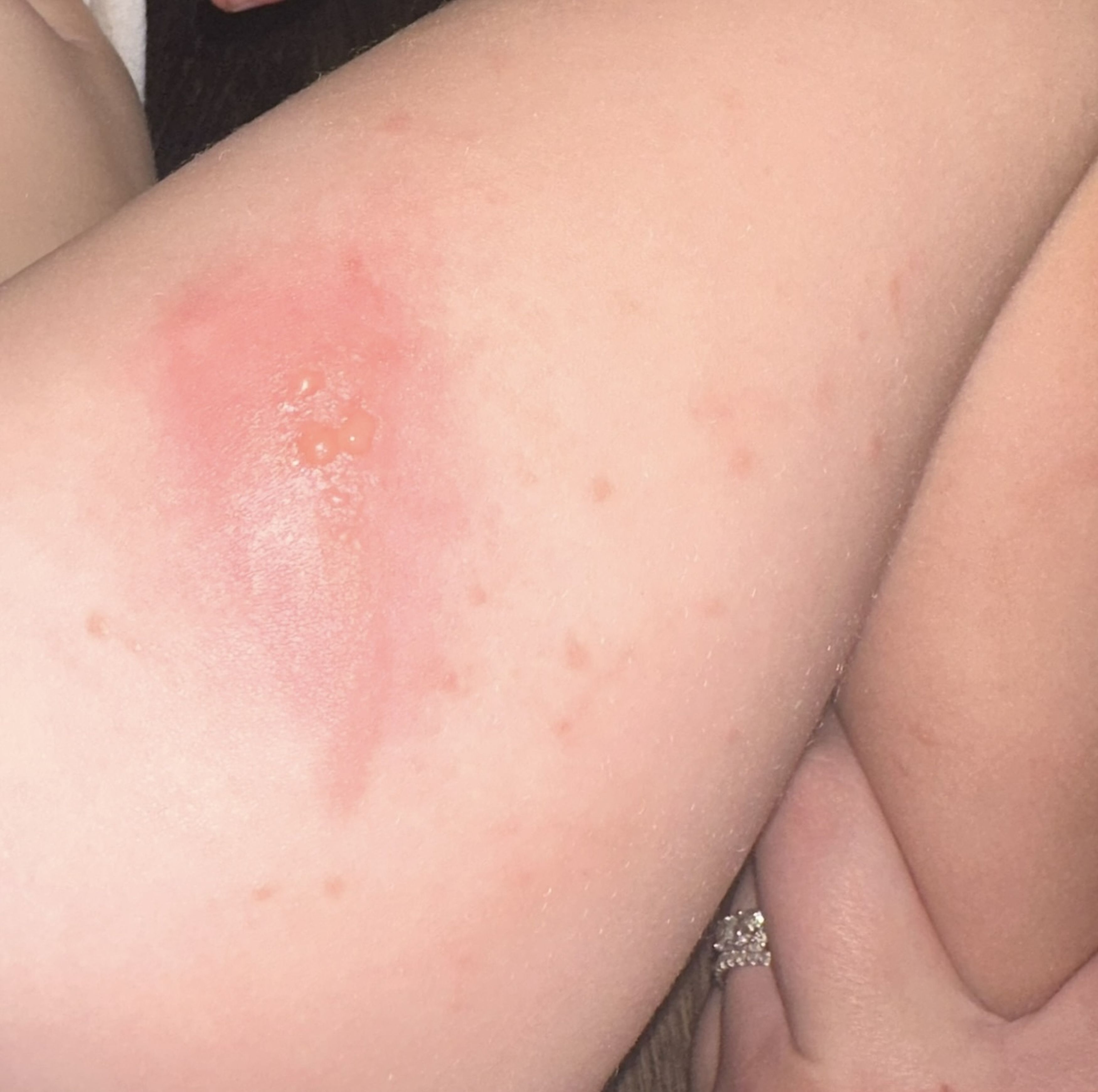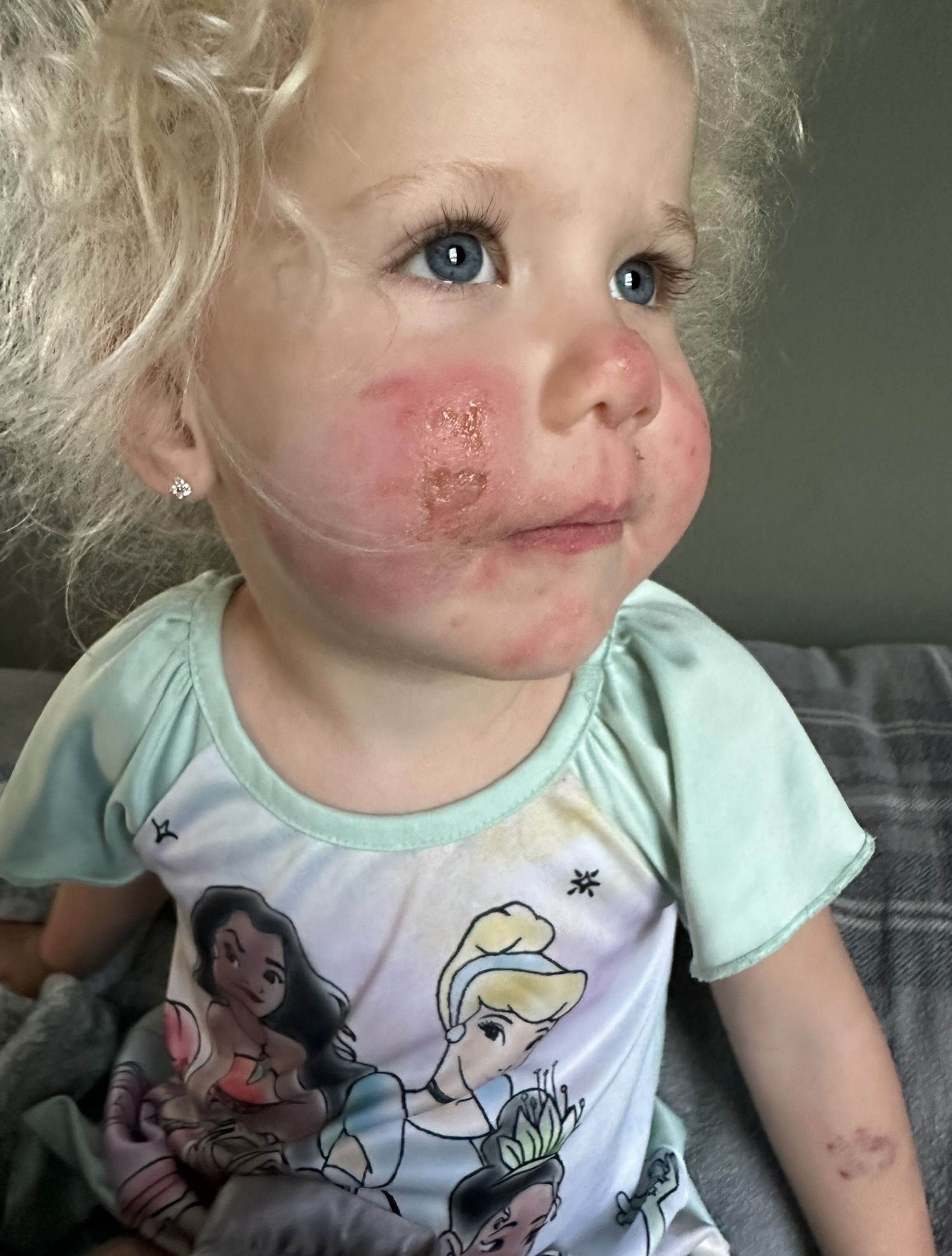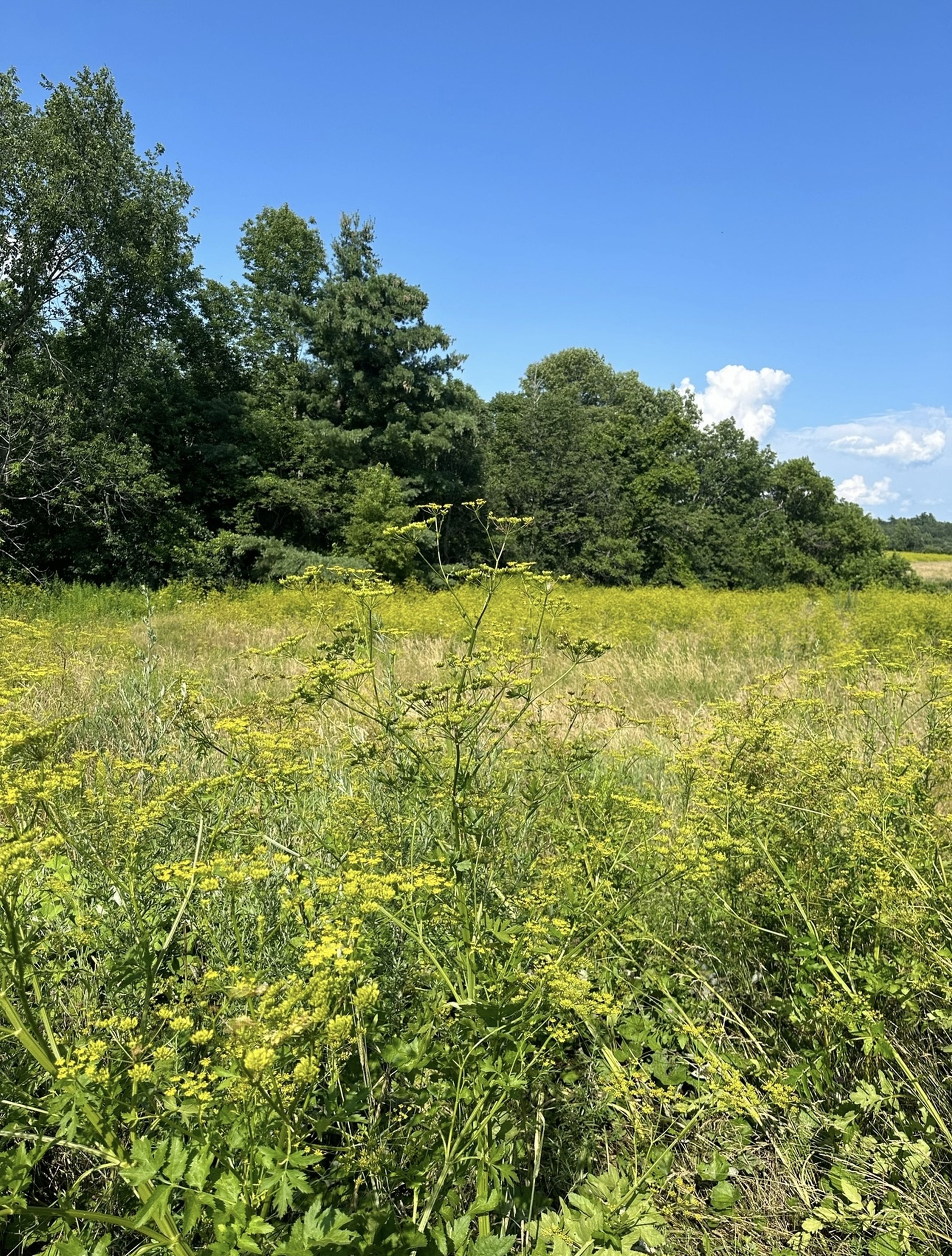Ella Cain was innocently playing in the backyard when she smelled and knocked a plant’s stems featuring delicate yellow petals.
The following morning, her mum, Audrey Cain, woke the two-year-old up and spotted tiny blisters bubbling up on her skin.
Thinking she’d fallen victim to poison ivy, the 27-year-old business owner dabbed the marks with chamomile lotion to relieve the itchiness.
But later that day, the blisters erupted into large, angry-looking burns all over little Ella’s body, including her arms, legs, cheeks and nose.
After looking up the plant online, which had invaded the family’s 113-acre property, Audrey realised it was a wild parsnip plant.
I was worried she would be scarred for life
Audrey Cain
The plant can trigger a skin condition also known as phytophotodermatitis.
The root of the plant – a parsnip – is fine to eat.
But the plant above the ground carries a toxic sap that stops the skin from protecting itself against the sun’s rays, causing gruesome burns when exposed to natural light.
The panicked mum-of-four called doctors, who advised her to use hydrocortisone to soothe Ella’s scorched skin and keep the tot out of sunlight.
After coming into contact with the plant on July 23, 2023, Ella was forced to wear long-sleeved clothing and play in the shade all summer.
‘SO MUCH PAIN’
Now fully healed, Audrey is sharing the three-year-old’s experience to alert parents to the potentially toxic plant lurking in their gardens so they don’t have the same experience.
Audrey, from Vassalboro, Maine, US, said: “It was heartbreaking seeing her in so much pain with these burns all over her.
“We have that plant all over our property. We just thought it was some kind of flowering plant; we never knew it was dangerous.
“She was in our backyard. She never picked them, she just smelled one, then she just touched the stems. We didn’t think anything of it.
“Next thing you know, she’s broken out in all these burns, and they progressively got worse over the next few days, including all down her face.
“She must have brushed up against one, too, because her leg broke out as well.”
“I thought maybe she’d come into contact with poison ivy, but looked all over the yard and saw none.
“Then I looked up what the yellow plants were by our house and found out that it was wild parsnip, and it causes that.”
The doctor advised Audrey to treat Ella’s burns with hydrocortisone cream and keep her out of the sunlight to prevent angering the burns.
KEPT SKIN COVERED FOR SUMMER
Audrey said: “Ella said it was itchy and it hurt, so we used chamomile lotion, then we switched to hydrocortisone.
“Then to heal it we used vitamin E oil.
“The burns lasted up to two weeks before they healed, that whole time she said how sore it was.
“The doctors said that for the remainder of the summer, she had to be careful not to go into the sun for too long and stay covered.
“We kept her play area shaded and her skin covered as much as possible.
“We live on 113 acres of land, so it would be impossible to get rid of all of them, but we trim them down as much as we can and spray the area.
“I was worried she would be scarred for life, but I think using vitamin E oil when she was in the healing stages really helped because she doesn’t have any scarring.
“I’m sharing what happened just so people are aware of it and know to stay away from it.”
What is a parsnip plant burn? And how do you prevent it?
Wild parsnip brun is a skin condition also known as phytophotodermatitis.
- Parsnip plant burns result when a chemical called furocoumarin reacts with sunlight
- This chemical is found in limes and citrus fruits, celery, figs, fennel, and several other plants.
- The burns typically start as a rash that forms within 24 hours of exposure.
- People with a mild case of parnsip plant burn may never even notice it, as the condition tends to clear up on its own
- Worse cases may develop into severe blistering that can land you in the hospital
- Treatment varies depending on the severity
- Make sure to wash your hands thoroughly after handling citrus fruits, avoid touching other people if you’re preparing food, and make sure to cover up if you’re drinking or eating al fresco during the summer months
